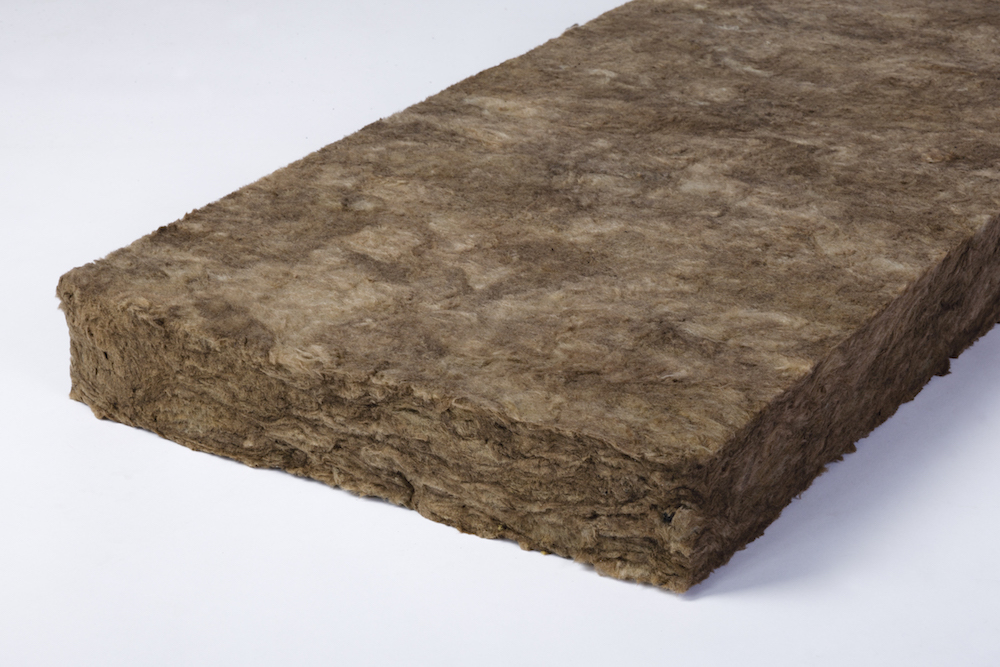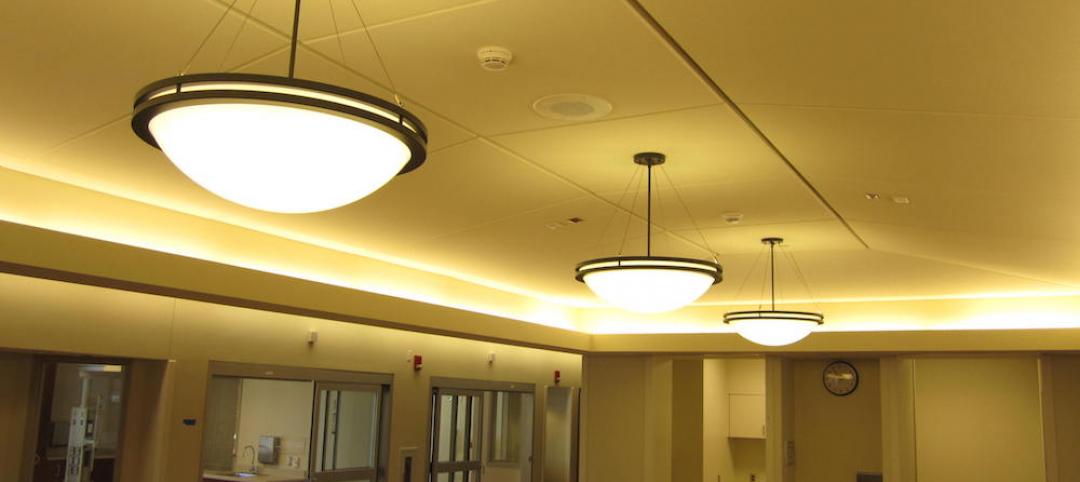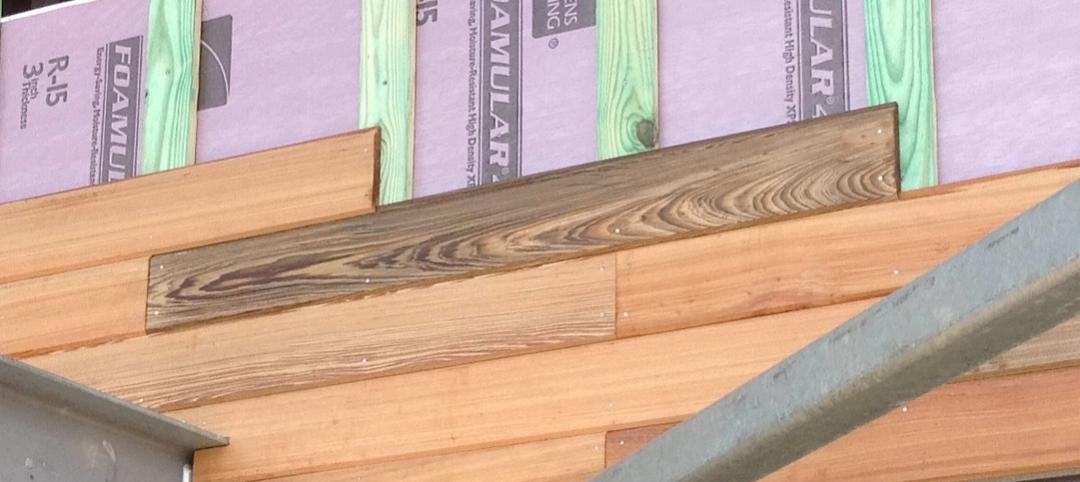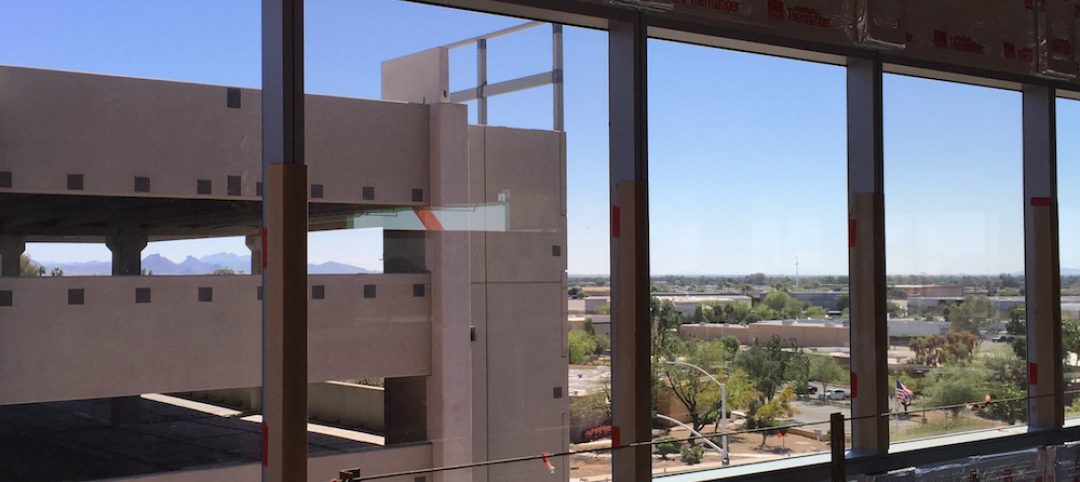When creating a building design strategy for a healthcare facility, AEC teams are faced with a host of unique concerns and objectives.
Tiffany Coppock, commercial building systems specialist at Owens Corning, says the first concern is the fact that healthcare facilities are built with longevity in mind.
“Those types of buildings are built to last, and they are built to change and be improved upon, so these can’t be temporary materials that get used within the wall. That’s one really key consideration,” says Coppock, a former healthcare architect.
From an energy efficiency standpoint, a strong building design is important given the high levels of energy consumed by hospitals. Any air and thermal leakages or inefficiencies in the building design could amount to huge amounts of wasted energy, accommodating oversized equipment, and money.
Another key concern for healthcare architects and designers to keep in mind is the patient experience, which is important from a patient care quality and outcomes perspective, as well as for considering the impact of patient satisfaction. This is often reflected in the all-important HCAHPS (Hospital Consumer Assessment of Healthcare Providers and Systems) score, which influence a facility’s rank and success. An emphasis on wellness also has designers taking steps to ensure healthy air quality and ample sunlight in patient rooms. AEC teams across industries are now taking into account occupants' well-being more than ever when designing buildings, and these objectives are especially paramount for healthcare facilities.
Acoustics in healthcare facilities can greatly impact the experience of both patients and hospital staff. From ceiling tiles to flooring to walls, building products need to create an environment where people can sleep, hear each other clearly, have private conversations, and not be exposed to extraneous noise.
Kevin Herreman, a research associate at Owens Corning with more than 30 years of experience in acoustics, says keeping sound contained in conference rooms and consultation areas is a key concern for compliance with HIPAA (Health Insurance Portability and Accountability Act) regulations that protect patient privacy. In addition, he says that louder, more reverberant spaces can negatively impact patient recovery times and clear communication, leading to poorer quality of care and patient outcomes.
“[Increasing loudness of sound] increases stress levels, so a quieter, more comfortable acoustic soundscape provides patients with a more calming atmosphere,” Herreman said. “Studies have correlated that people who are in quieter, more acoustically comfortable environments recover quicker."[1]
Daylighting and views also impact patient outcomes. Coppock notes that studies highlighting the importance of providing patients with sunlight and views of nature are prompting architects to build facilities optimized for better care and shorter recovery rates, all of which can influence patient care and satisfaction.[2]
In addition to patient outcomes, a mindful building design is needed to optimize the healthcare facility as a workplace environment. Staff personnel working long shifts will often face fatigue and need to be in an environment where they feel comfortable and can perform, Coppock says. Herreman adds that the ability to communicate effectively is a key consideration, and sound levels need to allow staff to properly hear each other, their patients, and patient monitoring equipment.
Additionally, healthcare facilities are filled with sensitive and expensive equipment such as CT scanners and MRI machines that require specific humidity and temperature levels to function, as well as wall-unique compositions such as leadlining. A leaky building enclosure can severely impact the medical equipment, resulting in risks to patient health—not to mention risking potential costs incurred from non-functioning equipment.

Indoor air quality and circulation is especially crucial in a healthcare facility where immunocompromised people are more vulnerable to impurities and chemicals in the air. Last year, Owens Corning introduced formaldehyde-free Thermafiber® mineral wool insulation, the first of its kind in the North American market. Product manager Stephanie Maxson says this product combines thermal performance, fire resistance, and acoustic performance with the health and safety impacts of a formaldehyde-free chemistry. “We believe strongly that our commercial products need to be on a formaldehyde-free binder because that’s the right thing for the market, for our customers, and, really, for the industry at large,” she said.
Ultimately, the consequences of a poor building design in a healthcare facility can range from minor operational headaches to serious detriments to patient and staff health and safety. For AEC teams looking to build quality facilities for healthcare clients, they must consider solutions that will target energy efficiencies, acoustic management, indoor air quality, and more.
References:
[1] http://www.ncbi.nlm.nih.gov/pubmed/15686777
[2] http://wrrc.arizona.edu/publications/water-harvesting/view-through-window-may-influence-recovery-surgery
Related Stories
Cladding and Facade Systems | Jun 5, 2023
27 important questions about façade leakage
Walter P Moore’s Darek Brandt discusses the key questions building owners and property managers should be asking to determine the health of their building's façade.
Sponsored | Building Enclosure Systems | May 16, 2023
4 steps to a better building enclosure
Dividing the outside environment from the interior, the building enclosure is one of the most important parts of the structure. The enclosure not only defines the building’s aesthetic, but also protects occupants from the elements and facilitates a comfortable, controlled climate. With dozens of components comprising the exterior assemblies, from foundation to cladding to roof, figuring out which concerns to address first can be daunting.
75 Top Building Products | Dec 16, 2019
Top Glass and Glazing Products for 2019
SageGlass's Harmony dynamic glass and Vitro Architectural Glass's Acuity low-iron glass are among the nine new glass and glazing products to make Building Design+Construction's 2019 101 Top Products report.
Sponsored | | Apr 26, 2018
Designing for Fire Safety and Resistance Remains Key For Healthcare Building Enclosures
Today’s insulation products are expanding beyond simple thermal insulation properties to offer fire resistance and firestopping properties.
Sponsored | | Feb 28, 2018
Quality Products Needed To Meet Green Building Standards Today
Sustainable healthcare facilities will need energy-efficient building enclosures from the outset.
Sponsored | | Dec 28, 2016
The Evolution of Sustainability and Product Transparency in Building Science
Sustainability now a core business strategy for manufacturers and AEC firms alike
Sponsored | | Nov 15, 2016
Helping to Protect the Perimeter Proactively
Incorporating more fire containment tactics to building enclosures benefits both architects and end user occupants alike
Sponsored | | Sep 9, 2016
The Complexity of Building Enclosures as a Critical Layer of Protection
AEC teams must approach building enclosures with everything—moisture, thermal, air, fire—in mind













